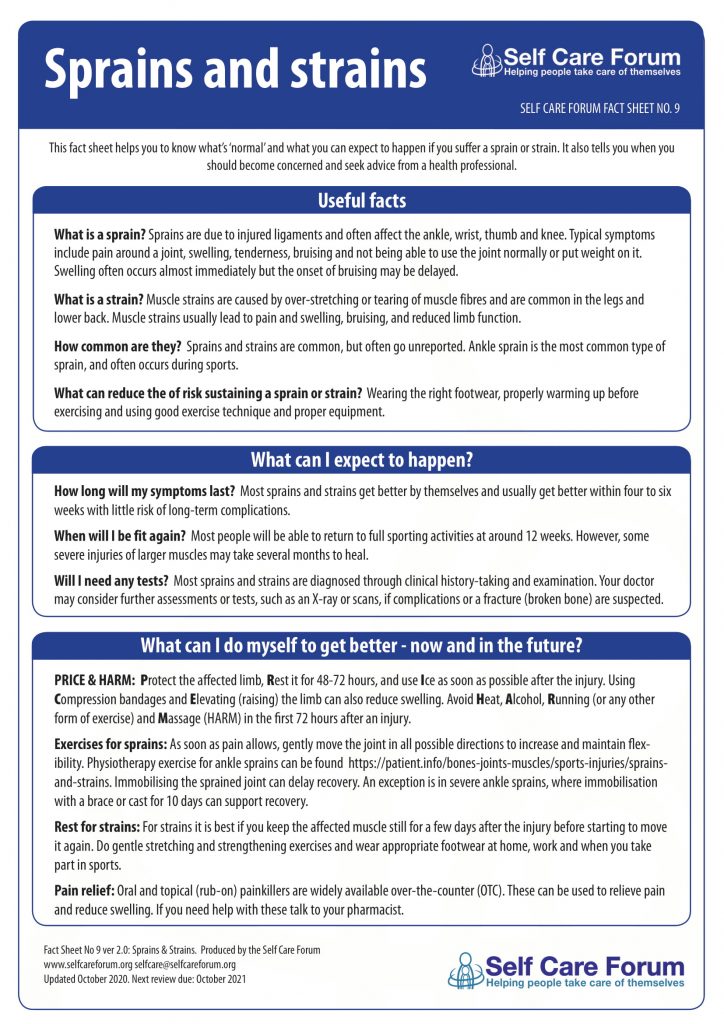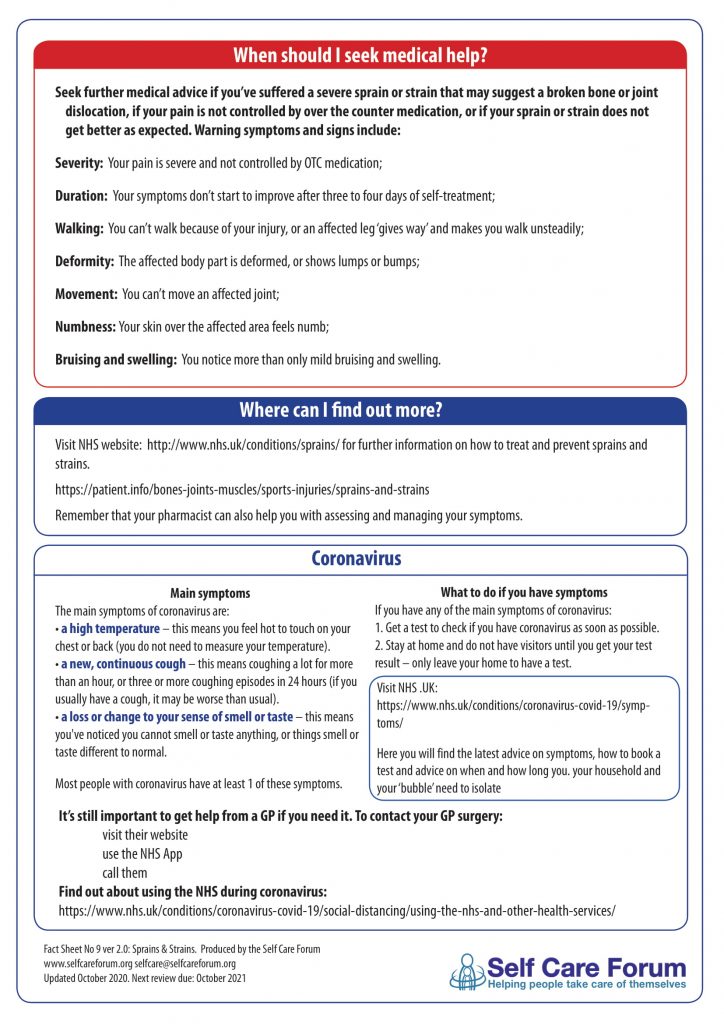Sprains and strains are common injuries affecting the muscles and ligaments. Most can be treated at home without seeing a GP.
Check if you have a sprain or strain
It’s likely to be a sprain or strain if:
•you have pain, tenderness or weakness – often around your ankle, foot, wrist, thumb, knee, leg or back
•the injured area is swollen or bruised
•you can’t put weight on the injury or use it normally
•you have muscle spasms or cramping – where your muscles painfully tighten on their own
How to treat sprains and strains yourself
For the first couple of days, follow the 4 steps known as RICE therapy to help bring down swelling and support the injury:
1.Rest – stop any exercise or activities and try not to put any weight on the injury.
2.Ice – apply an ice pack (or a bag of frozen vegetables wrapped in a tea towel) to the injury for up to 20 minutes every 2 to 3 hours.
3.Compression – wrap a bandage around the injury to support it.
4.Elevate – keep it raised on a pillow as much as possible.
To help prevent swelling, try to avoid heat – such as hot baths and heat packs – alcohol and massages for the first couple of days.
When you can move the injured area without pain stopping you, try to keep moving it so the joint or muscle doesn’t become stiff.
A pharmacist can help with sprains and strains
Speak to a pharmacist about the best treatment for you. They might suggest tablets, or a cream or gel you rub on the skin.
Painkillers like paracetamol will ease the pain and ibuprofen will bring down swelling. However, you shouldn’t take ibuprofen for 48 hours after your injury as it may slow down healing.
How long it takes for a sprain or strain to heal
After 2 weeks, most sprains and strains will feel better. Avoid strenuous exercise such as running for up to 8 weeks, as there’s a risk of further damage.
Severe sprains and strains can take months to get back to normal.
You can’t always prevent sprains and strains
Sprains and strains happen when you overstretch or twist a muscle. Not warming up before exercising, tired muscles and playing sport are common causes.
Go to a minor injuries unit if:
•the injury isn’t feeling any better after treating it yourself
•the pain or swelling is getting worse
See a GP if:
•you also have a very high temperature or feel hot and shivery
These could be signs of an infection.
Treatment at a minor injuries unit
You may be given self-care advice or prescribed a stronger painkiller.
If you need an X-ray it might be possible to have one at the unit or you may be referred to hospital.
Physiotherapy for sprains and strains
If you have a sprain or strain that’s taking longer than usual to get better, your GP may be able to refer you to a physiotherapist. Self Referral Form.
Physiotherapy from the NHS might not be available everywhere and waiting times can be long. You can also get it privately.
Go to A&E or call 999 if:
•you heard a crack when you had your injury
•the injured body part has changed shape
•the injury is numb, discoloured or cold to touch
You may have broken a bone and will need an X-ray.


Link to the selfcareforum.org website information on Sprains and Strain (printable) http://www.selfcareforum.org/wp-content/uploads/2013/04/9-Sprains-and-strains.pdf
